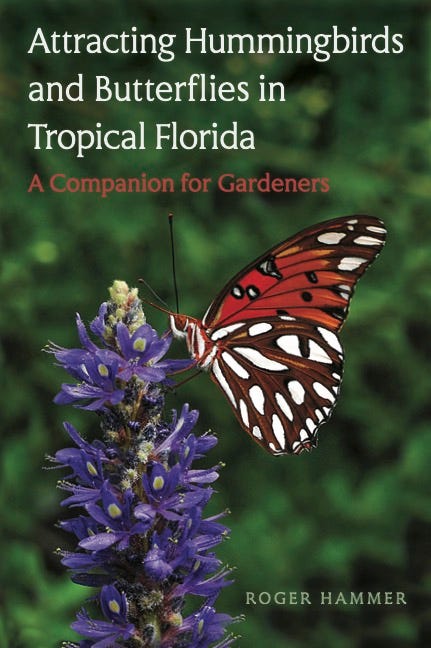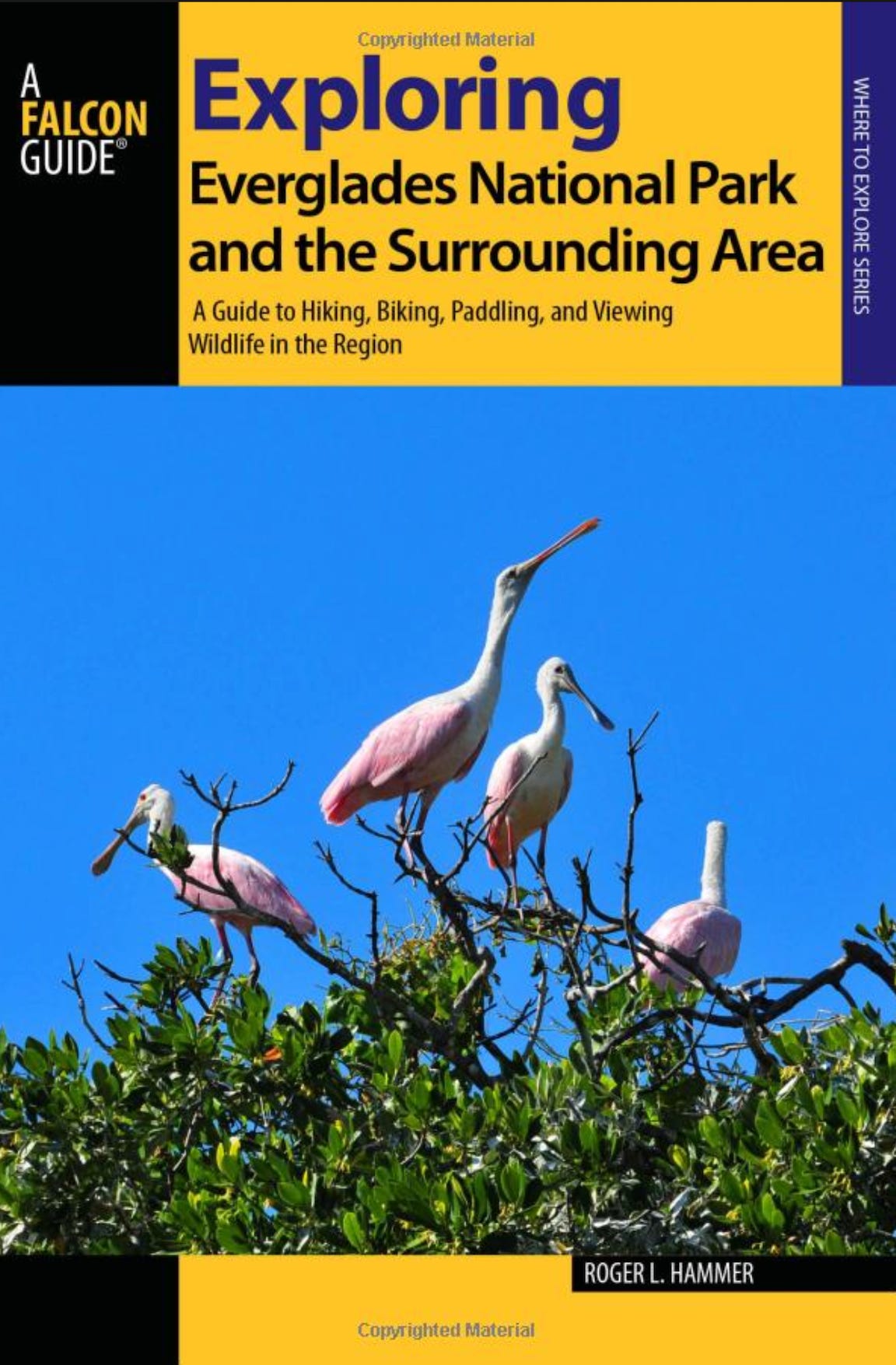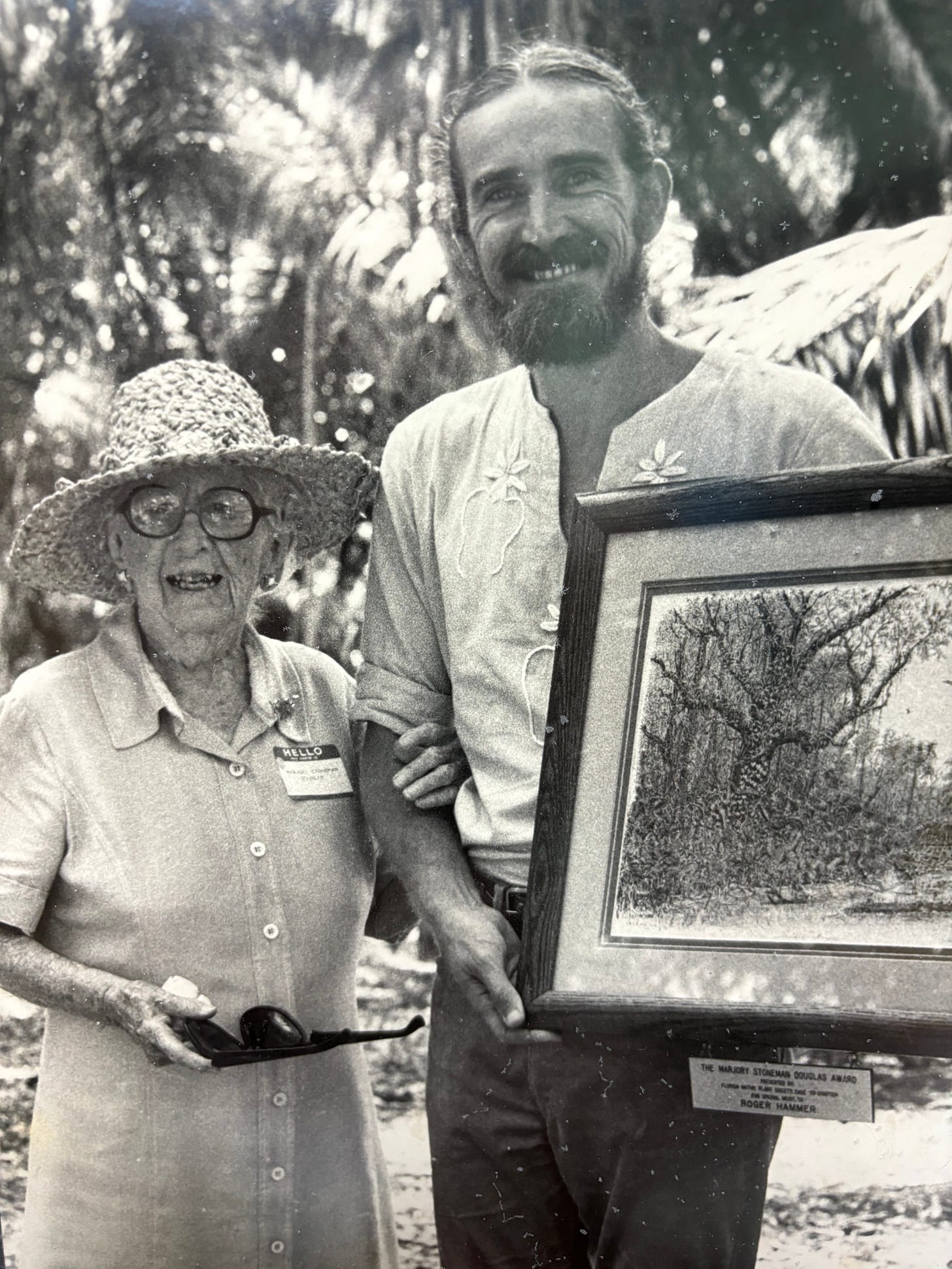This is a series of flash interviews with people I admire, people who are doing something—anything, a lot of things—for the Earth. These folks walk the walk, each of them in their own way, using their own unique skillset. They dedicate their energy, their time, and their hearts to a crucial cause: the preservation of this precious planet we call home.
Let me give you a piece of (unsolicited) advice: If you ever find yourself in the deepest, darkest part of the Everglades, dodging angry alligators, fugitive pythons and mosquitoes the size of baseballs, this is the guy you want as your guide. I mean it. Don’t go in there without him.
We could call Roger Hammer “the Crocodile Dundee of south Florida,” and he’d probably love that. Like Dundee, he’s fearless, he’s wild … and maybe a bit crazy, too. He has solo paddled the 99-mile Everglades Wilderness Waterway more times than he can count. He also canoed the entire length of the Suwannee River from the Okefenokee Swamp in Georgia down through north Florida to the Gulf of Mexico (260 miles). Oh, and we shouldn’t forget his watery journey across the Florida peninsula, piloting a kayak through the Caloosahatchee River across Lake Okeechobee to the St. Lucie River and ending in the Atlantic.
Seriously, folks, Roger Hammer knows the untamed parts of Florida like he knows the back of his hand. And—big surprise here—he doesn’t have any fancy letters after his name, or some big impressive science degree. He has learned the treasure trove of what he knows about the natural world by …. getting out there. By wading into the wild waters of the Everglades time after time, year after year. For decades, print journalists, TV crews, and just-plain-curious tourists have relied on his expertise about how to engage with the great outdoors of his home state.
Roger is credited with finding a population of atala butterflies on Virginia Key in 1979. The species was long-ago thought to be extinct, and Roger’s discovery garnered attention from National Geographic. He also discovered the first pair of Bahama woodstar hummingbirds in Florida, as well as two species of orchids not previously known to occur in the Sunshine State. You can read more about his accolades on his website.
Roger’s author byline appears on a wide array of books about Florida’s fauna and flora. Here are a few of those titles:
And then there’s his story about meeting the legendary conservationist Marjory Stoneman Douglas, author of the 1947 seminal book The Everglades: River of Grass. Roger was 38. He had just won the Marjory Stoneman Douglas Award, an honor given by the Florida Native Plant Society. After the ceremony, Marjory invited the young naturalist into her cottage on Biscayne Bay. “What would you like to drink?” she asked.
Roger’s response, trying to be polite: “I’ll have whatever you’re having.”
Marjory, 92 years old at the time, smiled and disappeared into her kitchen. When she came back, she had a bottle of scotch and two shot glasses. Roger reports that Marjory Stoneman Douglas, the icon of early twentieth-century environmentalism, “downed her scotch like a cowboy in a bar on Gunsmoke.”
As you can tell, Roger’s a first-rate storyteller. Here are some more tales from this lifelong adventurer:
Roger, please tell me about some of your early experiences in nature.
I had an idyllic childhood growing up in a beachfront home in Cocoa Beach back in the 1950s, when my brother and I could walk down the beach and the only footprints in the sand were ours. I even recall seeing a Florida black bear walking down the beach, but that was back when sea oats and saw palmettos stretched along the upper dunes as far as you could see. When I was only about 9 or 10 years old, my mom noticed I was interested in birds, so she bought me my first Peterson’s Field Guide to Birds of Eastern North America, along with a pair of binoculars, and I would sit on the beach identifying the various shorebirds, gulls, and terns. My friends thought I was weird.
Back in those days we took nature for granted, but little did I know, it would all change in a most disheartening way, with condos replacing the sea oats and saw palmettos up and down the beach, as northerners flocked into Florida for nothing more than warm winters, and with little regard for wild Florida.
How did those early experiences shape your relationship with the natural world?
Growing up surrounded by wild Florida is what led me down a path of wanting to be outdoors among nature, which is not nearly as available to kids growing up in Florida today. Plus, my brother and I were raised by a mom who would tell us to go outside and play, but be back by suppertime. So we’d go out to look for gopher tortoises, lizards, snakes, and crabs in the dunes, go surf fishing, or simply ride our bikes down the beach for miles before getting tired and turning around. I am so grateful for those memories because they have lingered in my mind and spirit for my entire life.
How do you connect with nature now … either through your work or leisure or both?
My wife and I live in a 1926 home on 1.2 acres that we landscaped with bird- and butterfly-attracting plants, both native and ‘Florida Friendly’ non-natives. Our yard list includes 147 species of birds and 74 species of butterflies, and our property is on the annual Audubon Christmas Bird Count, as well as the North American Butterfly Association’s annual butterfly count. We live only 12 miles from the main entrance to Everglades National Park, so we have 1.5-million acres of nature as our getaway. I have authored books titled Everglades Wildflowers, Exploring Everglades National Park, and Paddling Everglades and Biscayne National Parks. I have solo paddled the 99-mile Everglades Wilderness Waterway three times, and I consider those trips to be 10 days of blissful solitude. For 30 years I worked for the Miami-Dade County Parks Department as manager of a 120-acre nature center called Castellow Hammock Park. What I did at work was basically the same as what I did for fun, because my job as the senior naturalist for Miami-Dade Parks was to lead wildflower walks in the Everglades, and lead guided, educational canoe trips in Everglades National Park as well as guided kayak fishing excursions in Biscayne National Park. I also taught classes on landscaping with native plants, edible wild plants, attracting birds and butterflies to your yard, and also nature-based homeschool classes. I retired in 2010 and now work occasionally as a survivalist instructor for the Discovery Channel’s reality show, Naked and Afraid. Although I never attended college, I was awarded an honorary Doctor of Science degree in 2012, thanks to my knowledge of Florida’s native flora. That knowledge came mostly from spending so much time in the field with some of the best botanists in Florida, so I have them to thank for that honor.
What are your biggest fears for the future of our planet?
Overpopulation is undoubtedly the most insidious threat to the planet Earth, short of nuclear holocaust or our sun burning itself out. Overpopulation results in loss of natural habitats, as well as agricultural land, because of development, the extinction of native plants and animals, and eventually leading to famine, poverty, and a lower standard of living. However, once the planet begins to exceed its carrying capacity of humans, Mother Nature has a way of striking back with global pandemics and natural disasters. One fact of note is that India has now exceeded the population of China. If the human population continues to increase, there will be no natural world left because there will come a time when our state and national parks will become targets of politicians and developers, to make room for more development. It is a bleak future.
What is your biggest hope for the future of our planet?
The only hope for the future of our planet is for people around the world to come to their senses and do something to reverse the threat of overpopulation. It’s as simple as that.
Thank you, Roger, for being a Champion of Nature!














What an inspirational figure is Roger Hammer!! Thank you for sharing!
Roger Hammer, in his photos, appears to be overflowing with life and vitality. Thank you for this insight into his dedication to the area he lives in and loves. I am learning so much about the southeastern US, and I love it.